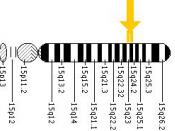Us New world Report 10-31-01 November 5, 2001 CP. 8 Redesigning Dad Sperm may be the best place to fix flawed genes. The technology is just about ready.
What if a doctor could have corrected any defect in a man's sperm before fertizing the egg. This scenario is edging closer to reality now, as scientists figure out how to slip new genes into the sperm-producing cells of lab animals, yielding genectically altered sperm. Just last week they announced that the techonology worked as intended: Mice equipped with gene-altered sperm passed the gene to their descendants. Scientists are thinking about using similar techniques to tinker with humans' genetic inheritance to cure genetic diseases and create genetically engineered superhummans.
Ever since scientists started testing gene tharapy in clinical trials more than a decade ago, they've agreed never to alter genes in humman sperm, eggs, or embryos. But so far this strategy has been disappointing.
Unlike sperm, human eggs are scarce and trick to work with, so scientists go for correcting genetic diseases in sperm. A man would first have a testicular biopsy to remove some of the primitive cells that develop into sperm. Scientists would alter these cells by inserting genes or activating the cells' DNA-repair mechanisms. Finaly, doctors would irradiate the man's testes to destroy any remaining sperm-producing cells and reimplant the altered ones. Then he would not pass on a genetic disease to his progeny.
Other scientists are pushing more modest proposals in which they would produce altered sperm in the lab. before using the sperm to fertilize an egg, they could test it to make sure it was healthy and lacked the genetic defect. Only one healthy sperm would be used to conceive a child. Scientists working with animals have already developed many of the necessary tools. Their goal...


